yen (Page 2)
Japanese citizens feel the symbolism-rich coin, which lacks something, can make travel in Japan difficult for foreign guests.
Here’s a beautifully compelling reason to hang onto your change when you go shopping in Japan.
We’ve all been there: you’ve been marathoning a TV series on your laptop, or maybe playing a game for way too long, and now your fans are going haywire and the whole computer is hot to the touch. What are you supposed to do? Put your viewing on hold and wait for your computer to cool? No way!
Thankfully one Japanese Twitter user has another solution: cover your computer in 10-yen coins. Read on to find out why this idea just might be crazy enough to work.
I’m sure I’m not the first to admit that life would be so much easier if money grew on trees, or even if earning more money were as simple as just printing it off your computer. But alas, the world does work that way, and anyone caught trying to spend counterfeit money is bound to end up in hot water, as these two Japanese suspects are sure to tell you.
The Showa period (1926-1989) was a time of immense change for Japan when the country went from being an imperial power to a poverty-stricken post-war nation and then becoming an economic powerhouse that dominated automotive and electronic industries around the world. Twenty-seven years since that era ended and the current Heisei era began, fond memories of “Showa Japan” still flood many Japanese minds.
But a recent online poll asked netizens to take off their rose-tinted glasses and consider the aspects of daily Showa-period life that, while seeming completely normal back then, would be unthinkable now. Join us after the jump for a look at the slightly grim feedback.
How did you first learn about the value of money as a child? Did you save up your allowance in a piggy bank until there was enough to buy a cool new toy? Or how about taking care of the neighbor’s cat for a small reward?
Or maybe you were never actually taught how to spend your cash wisely, and to this day keep a tall stack of credit card bills around in case you need to blow your nose.
Speaking of money going down the drain, that’s pretty much what one Japanese 7-year-old was found guilty of the other day. He was given a 1,000-yen note, worth roughly US$9.80, and told to “use it however you want.” While most other kids would have jumped for joy and rushed to the nearest toy store, this kid had a much more…creative idea.
On 4 November Osaka Prefectural Police announced the arrest of two teenagers aged 15 and 16 for fraud. The two boys are accused of trying to pass off a fake one million yen (US$10,000) bank note at a small cigarette stand in Suita City.
Although, passing off counterfeit money is usually considered “uttering” and may be punishable by jail time, the pair were given a reduced charge of fraud because, according to police, “the fake money used was really bad.”
With Mt. Fuji having recently been declared a UNESCO World Heritage site on June 22, souvenir makers have rushed to cash in on the mountain’s new found fame offering everything from rice bowls to beer glasses crafted in the shape of the iconic volcano.
Read More
A major flaw of Japanese currency is the 10,000 yen bill ceiling of banknotes.
For daily life, having a system of bills which max out at around 100 bucks US is not a problem. But for those special times when you want to buy something high-end like a computer or melons, your wallet suddenly swells to the size of a baseball. In country that largely shuns checks or debit cards, cash is still king – a thick, hard to fit in your back pocket king.
Rumors are swirling about financial reforms in the works by Shinzo Abe’s recently elected Liberal Democratic Party involving, among other things, the issuing of 50,000 yen bills. Yes, it looks like – for once – a politician is looking out for the needs of people with too much money.
Japanese paper currency is printed with the faces of various prominent figures. However, rather than past or present leaders, like many countries do, the yen banknotes are decorated with writers and a scientist.
For example, the 10,000 yen (US$124) bill has the likeness of Fukuzawa Yukichi, a highly influential writer during Japan’s transition from the feudal system to modern government. He is also known to have never smiled in a photograph, which is why when one man attempted to spend a 1,000,000 yen (US$12,400) bill with a picture of a grinning Yukichi, the clerk’s suspicion was aroused.
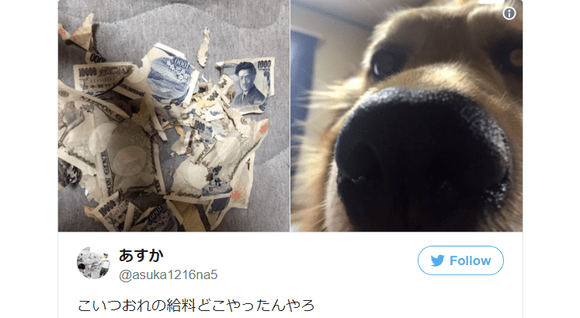

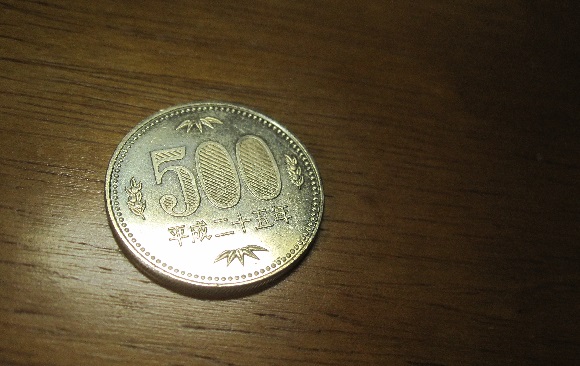
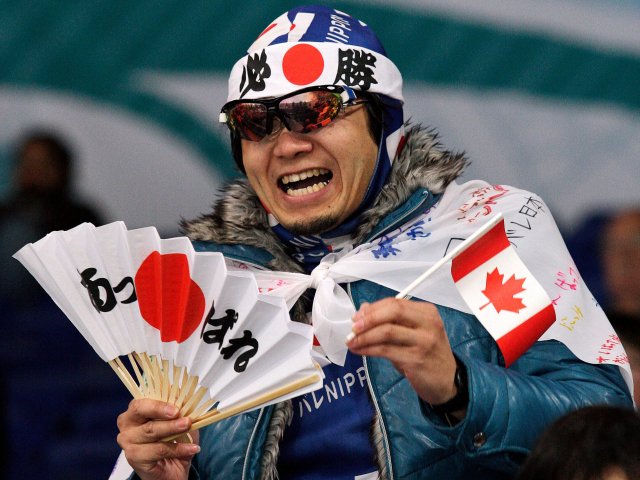
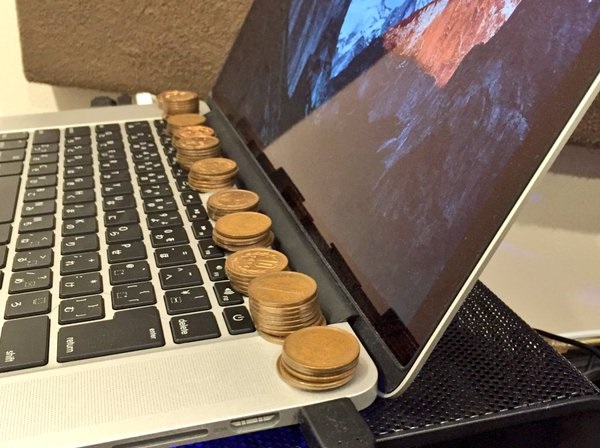

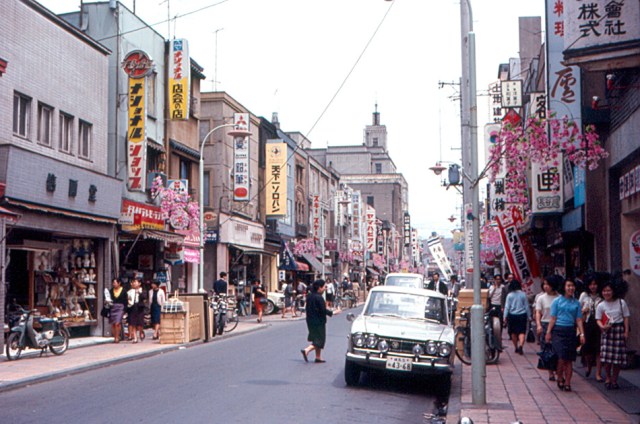
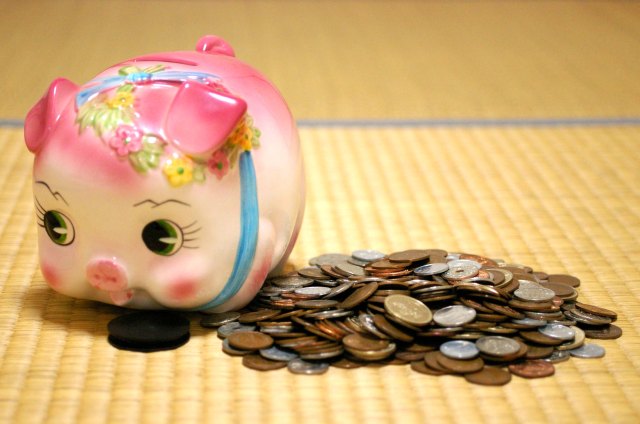
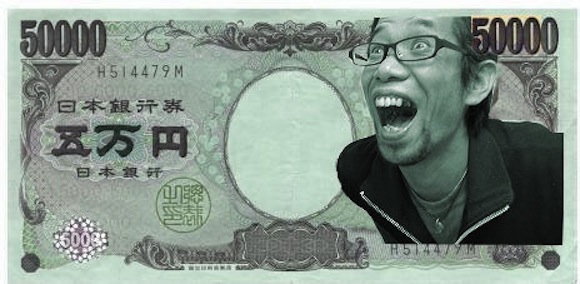
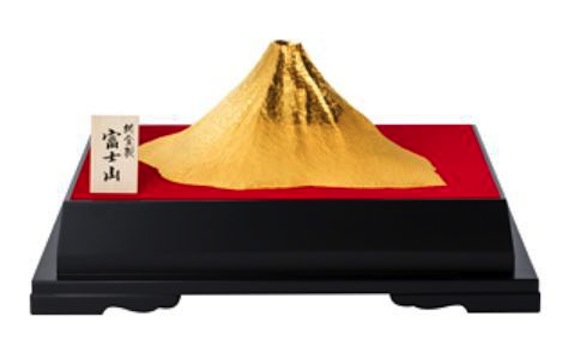
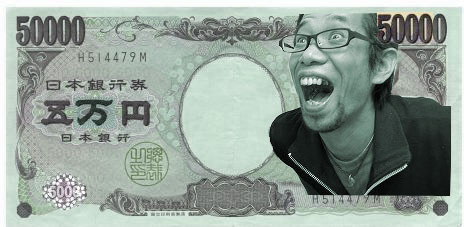
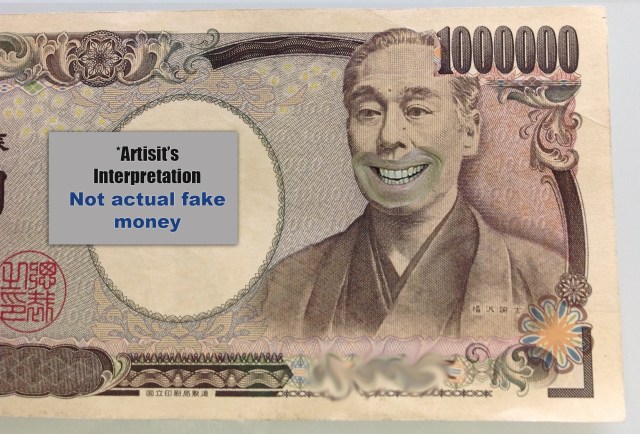
 Hayao Miyazaki says Happy New Year to Studio Ghibli fans with new art for Year of the Horse
Hayao Miyazaki says Happy New Year to Studio Ghibli fans with new art for Year of the Horse Manga artist raises question online about false perspective in Ghibli film My Neighbor Totoro
Manga artist raises question online about false perspective in Ghibli film My Neighbor Totoro Uniqlo Ukiyo-e Blue T-shirts: A cool-hued reinterpretation of some of Japan’s greatest paintings
Uniqlo Ukiyo-e Blue T-shirts: A cool-hued reinterpretation of some of Japan’s greatest paintings Pokémon Cafe releases limited-time Pokémon Starter menu ahead of Sword and Shield release
Pokémon Cafe releases limited-time Pokémon Starter menu ahead of Sword and Shield release Stamina-destroying “Paralysis Noodles” are Tokyo’s newest over-the-top ramen innovation
Stamina-destroying “Paralysis Noodles” are Tokyo’s newest over-the-top ramen innovation Japanese schoolgirls’ hemlines are still up, but socklines are way down
Japanese schoolgirls’ hemlines are still up, but socklines are way down 7-Eleven Japan’s ramen-cooking robot whipped us up a bowl of noodles【Taste test】
7-Eleven Japan’s ramen-cooking robot whipped us up a bowl of noodles【Taste test】 Osaka teen arrested for hacking into Internet cafe’s app to steal data, was helped by Chat-GPT
Osaka teen arrested for hacking into Internet cafe’s app to steal data, was helped by Chat-GPT Family Mart releases a fukubukuro lucky bag packed with cool Convenience Wear
Family Mart releases a fukubukuro lucky bag packed with cool Convenience Wear How to make an epic pizza at a Japanese family restaurant
How to make an epic pizza at a Japanese family restaurant Starbucks Japan ready to get Year of the Horse started with adorable drinkware and plushies【Pics】
Starbucks Japan ready to get Year of the Horse started with adorable drinkware and plushies【Pics】 Cyberpunk anime meets traditional culture in Ghost in the Shell gold leaf Japanese changing screens
Cyberpunk anime meets traditional culture in Ghost in the Shell gold leaf Japanese changing screens 7 great places to see Mt. Fuji from without having to climb it
7 great places to see Mt. Fuji from without having to climb it Hello Kitty Choco Egg figures are an adorable trip through three periods of Japanese pop culture【Pics】
Hello Kitty Choco Egg figures are an adorable trip through three periods of Japanese pop culture【Pics】 We found possibly the quietest Japanese-style hotel in Tokyo’s bustling Shinjuku district
We found possibly the quietest Japanese-style hotel in Tokyo’s bustling Shinjuku district Japan’s otoshidama tradition of giving kids money at New Year’s gets a social welfare upgrade
Japan’s otoshidama tradition of giving kids money at New Year’s gets a social welfare upgrade Sumo Sanrio! Hello Kitty and pals team up with Japan Sumo Association for new merch【Pics】
Sumo Sanrio! Hello Kitty and pals team up with Japan Sumo Association for new merch【Pics】 More Than a Capsule Stay: Why Solo Travelers Choose “global cabin Yokohama Chinatown”
More Than a Capsule Stay: Why Solo Travelers Choose “global cabin Yokohama Chinatown” Japan’s oldest largetooth sawfish in captivity back on display in Mie Prefecture
Japan’s oldest largetooth sawfish in captivity back on display in Mie Prefecture 7-Eleven Japan starts new temporary luggage storage service in over 300 branches
7-Eleven Japan starts new temporary luggage storage service in over 300 branches Disillusionment at Tsukiji’s tourist-target prices led us to a great ramen restaurant in Tokyo
Disillusionment at Tsukiji’s tourist-target prices led us to a great ramen restaurant in Tokyo Starbucks teams up with 166-year-old Kyoto doll maker for Year of the Horse decorations【Photos】
Starbucks teams up with 166-year-old Kyoto doll maker for Year of the Horse decorations【Photos】 Tokyo considering law requiring more trash cans following litter increase in heavily touristed area
Tokyo considering law requiring more trash cans following litter increase in heavily touristed area Tokyo’s Tsukiji sushi neighborhood asks tour groups to stay away for the rest of the month
Tokyo’s Tsukiji sushi neighborhood asks tour groups to stay away for the rest of the month Tokyo event lets you travel back in time, for free, to celebrate 100 years since Showa era start
Tokyo event lets you travel back in time, for free, to celebrate 100 years since Showa era start Sanrio theme park in Japan announces plans to expand into a Sanrio resort
Sanrio theme park in Japan announces plans to expand into a Sanrio resort Japan may add Japanese language proficiency, lifestyle classes to permanent foreign resident requirements
Japan may add Japanese language proficiency, lifestyle classes to permanent foreign resident requirements Survey asks foreign tourists what bothered them in Japan, more than half gave same answer
Survey asks foreign tourists what bothered them in Japan, more than half gave same answer Japan’s human washing machines will go on sale to general public, demos to be held in Tokyo
Japan’s human washing machines will go on sale to general public, demos to be held in Tokyo Japan’s deadliest food claims more victims, but why do people keep eating it for New Year’s?
Japan’s deadliest food claims more victims, but why do people keep eating it for New Year’s? We deeply regret going into this tunnel on our walk in the mountains of Japan
We deeply regret going into this tunnel on our walk in the mountains of Japan Studio Ghibli releases Kodama forest spirits from Princess Mononoke to light up your home
Studio Ghibli releases Kodama forest spirits from Princess Mononoke to light up your home Major Japanese hotel chain says reservations via overseas booking sites may not be valid
Major Japanese hotel chain says reservations via overseas booking sites may not be valid Put sesame oil in your coffee? Japanese maker says it’s the best way to start your day【Taste test】
Put sesame oil in your coffee? Japanese maker says it’s the best way to start your day【Taste test】 No more using real katana for tourism activities, Japan’s National Police Agency says
No more using real katana for tourism activities, Japan’s National Police Agency says Starbucks Japan reveals new sakura drinkware collection, inspired by evening cherry blossoms
Starbucks Japan reveals new sakura drinkware collection, inspired by evening cherry blossoms Updated cherry blossom forecast shows extra-long sakura season for Japan this year
Updated cherry blossom forecast shows extra-long sakura season for Japan this year Japanese schoolgirls’ hemlines are still up, but socklines are way down
Japanese schoolgirls’ hemlines are still up, but socklines are way down 7-Eleven Japan’s ramen-cooking robot whipped us up a bowl of noodles【Taste test】
7-Eleven Japan’s ramen-cooking robot whipped us up a bowl of noodles【Taste test】 Osaka teen arrested for hacking into Internet cafe’s app to steal data, was helped by Chat-GPT
Osaka teen arrested for hacking into Internet cafe’s app to steal data, was helped by Chat-GPT Family Mart releases a fukubukuro lucky bag packed with cool Convenience Wear
Family Mart releases a fukubukuro lucky bag packed with cool Convenience Wear How to make an epic pizza at a Japanese family restaurant
How to make an epic pizza at a Japanese family restaurant Tokyo adding new anti-littering fines in Shibuya and Harajuku, will require more trash cans too
Tokyo adding new anti-littering fines in Shibuya and Harajuku, will require more trash cans too Kyoto experiencing problems with foreign tourists not paying for bus fares, but not on purpose
Kyoto experiencing problems with foreign tourists not paying for bus fares, but not on purpose Haunted, abandoned hotel complex on Okinawa is a lesson against messing with Japan’s spirits
Haunted, abandoned hotel complex on Okinawa is a lesson against messing with Japan’s spirits Five different ways to say “children” in Japanese
Five different ways to say “children” in Japanese We try “Japan’s best-selling miso soup” and it melts the cold in our bones
We try “Japan’s best-selling miso soup” and it melts the cold in our bones Mr. Sato accosts award-winning actor Hideaki Ito【Interview】
Mr. Sato accosts award-winning actor Hideaki Ito【Interview】 Illustrator creates beautiful “Bicycle Boy” watercolour series inspired by Studio Ghibli
Illustrator creates beautiful “Bicycle Boy” watercolour series inspired by Studio Ghibli We revisited Sweets Paradise after a decade to see if Japan’s dessert buffet still delivers
We revisited Sweets Paradise after a decade to see if Japan’s dessert buffet still delivers Beautiful Studio Ghibli photo frames let you put yourself in the worlds of Totoro and Kiki【Pics】
Beautiful Studio Ghibli photo frames let you put yourself in the worlds of Totoro and Kiki【Pics】